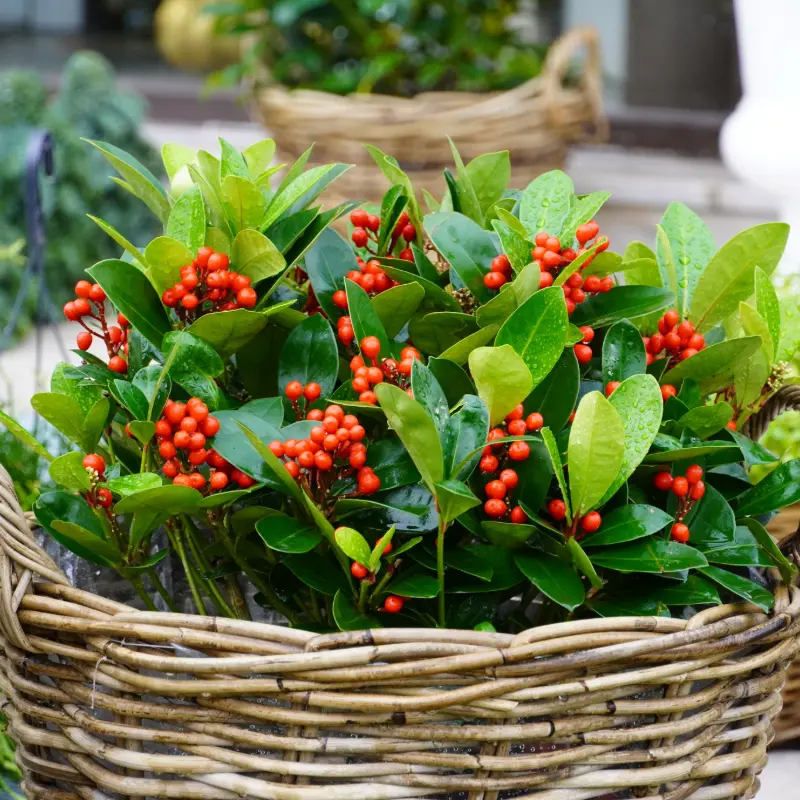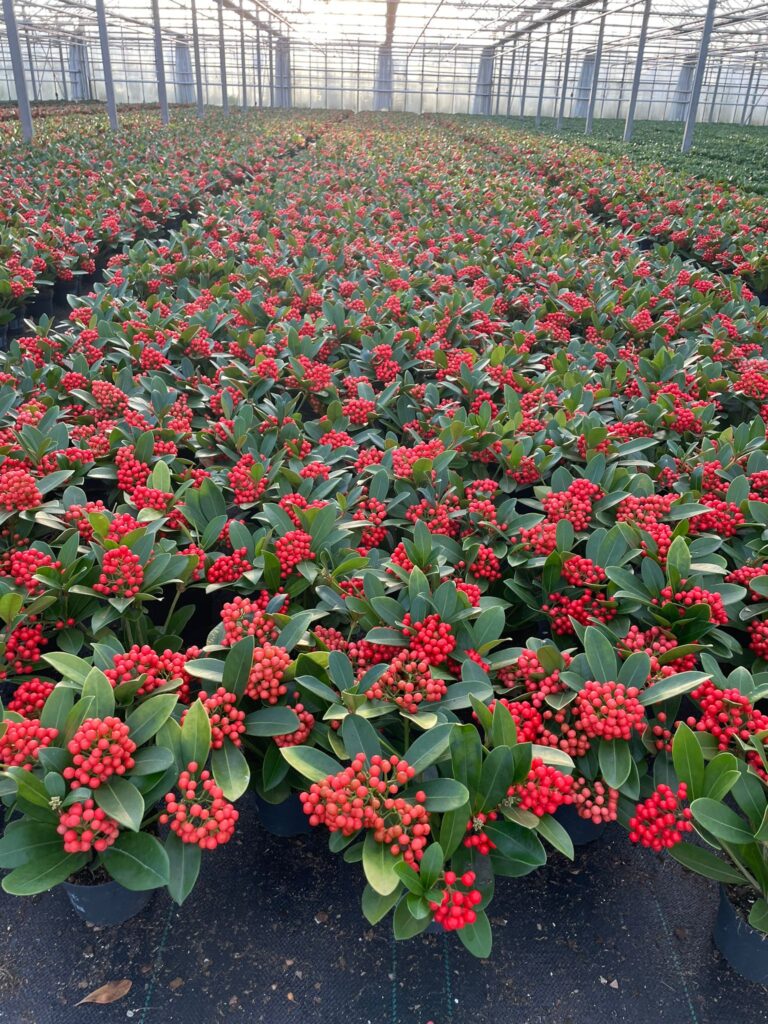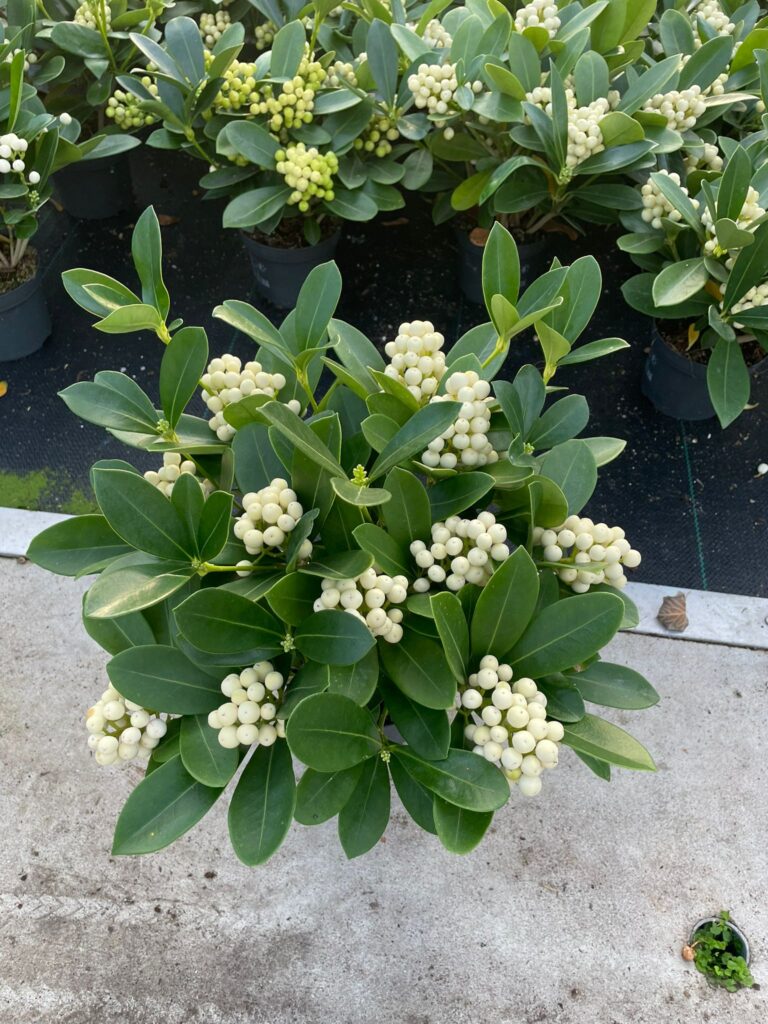Skimmia (Berries)
| Name: Skimmia | Family: Rutaceae | Type Plant: Evergreen shrub |
| Flowering time: Spring | Best time to buy: Autumn to early winter | Max Height: 60–150 cm |
| Sun/Shadow: Partial shade to full shade | Wintergreen: Yes | Humidity: Prefers moderate humidity |

Origin of Skimmia (with berries) plants
Skimmia is an evergreen shrub that comes from parts of Asia, including Japan and China. It has been grown in gardens for hundreds of years for its shiny leaves, pretty flowers, and colorful berries. The berries usually start showing up in autumn, adding a splash of red to gardens just as the weather gets cooler. People love it because it looks cheerful even when many other plants are losing their leaves. Over time, Skimmia has become a favorite for both gardens and indoor containers.
How to care for Skimmia (with berries) plants
Skimmia is pretty easy to take care of once planted in the right spot. It prefers shady or partly shady areas and soil that drains well. During autumn, it’s important to keep the soil slightly moist as the plant prepares for winter. Avoid planting it in full sun, which can make the leaves and berries look stressed. Fertilizing lightly in early spring helps it grow healthy berries and strong leaves for the next season.
What makes it special
What makes Skimmia special is its combination of green leaves, fragrant flowers, and bright berries. The berries are usually red, but some varieties can be pink or white, giving your garden a nice color contrast. Unlike many plants that fade in autumn, Skimmia actually becomes more noticeable when other plants are slowing down. Its evergreen nature makes it a great background plant, while the berries give it a festive feel for autumn and winter. It’s simple but always eye-catching.
Funny fact
Skimmia plants are sensitive to pruning — if you trim the branches at the wrong time, you can accidentally cut off next year’s flowers and berries! So while they’re tough and evergreen, they have a delicate side when it comes to timing. It’s a little reminder that even hardy plants like to be treated with care.


